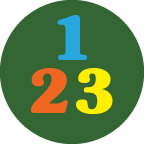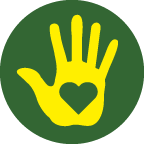Water Play
Using different utensils for outdoor water play and making “swamp” water
Instructions

- Fill a large tub/bucket of water outside
- Encourage a child to explore by giving him plastic bottles to fill, squeeze bottles to squirt, strainers, small plastic watering cans, funnels, plastic tubing, different size containers to empty and fill, etc.
- When finished playing, remove all the bottles and share that you will now make “swamp” water
- Add dirt/sand to the water. Stir up the water and let child watch dirt settle to the bottom
*If an outdoor space isn't available, use a kitchen or bathroom sink. It's up to you if you allow them to make swamp water
Simplify
Help the child think of words that have to do with swamps: wet, warm, plants, bugs, frogs, mud, water, etc. See if they can make up a sentence using one of those words.
Extend
Share some information regarding swamps:
A swamp while similar to a lake is much shallower or not very deep. Swamps are covered with water, but allow plants to grow that you can see on the surface.
Swamps are generally dominated by water-tolerant trees.
Click here to learn a rap about wetlands. Swamps are a type of wetland.
QUESTIONS FOR CHILD
Why is water important for people?
Tell me about an important item you own. How did you obtain the item? How do you keep it safe? Do you think this item will always be important to you?
Materials
- tab/bucket/plastic pool of water
- plastic bottles to fill
- squeeze bottles to squirt
- strainers
- small plastic watering cans
- funnels
- plastic tubing
- different size containers
- dirt/sand
Curriculum Plan Resources
Skills Focus
- Shape - Rectangle
- Color - Orange
- Number - 1-4 Review
- Alphabet - O, U
- Senses - Sight
- Character Trait - Responsibility
- Target Words - Under, Up, Down, Tall
Monthly Proverb
Yiddish- If each person sweeps in front of his own door the whole street is clean
Did You Know?
"The brain builds itself in response to the child’s experiences. Brain circuits that the child uses in daily life are strengthened. Those that the child doesn’t use fade away. "
National Research Council From Neurons to Neighborhoods, 2000
Books to Read
"AlphaBugs: A Pop Up Alphabet Book"
by David Carter (Activity 1)
"Deep In The Swamp"
by Donna Bateman (Activity 22)
"Head to Toe"
by E. Carle (Activity 10)
"AlphaBugs: A Pop Up Alphabet Book". VIDEO
by David Carter (Activity 1)
"Head to Toe". VIDEO
by Eric Carle (Activity 10)
"Deep in The Swamp". VIDEO
by Donna Bateman (Activity 22)
Music Playlist
"When The Saints Go Marching In"
by Pete Fountain, Album: Do You Know What It Means to Miss New Orleans? (Jazz) (Activity 2)
"Go, Flush, Wash, Dry"
by Martin Kerr, Album: Favorite Songs from the Family Learning House (Children) (Activity 24)
"The Noble Duke of York"
by Susan McRae, Album: Barney’s Song Book - 16 Favourites for Kids (Children) (Activity 15)
"When The Saints Go Marching In" VIDEO
by Pete Fountain (Activity 2)
"The Noble Duke of York" VIDEO
by Barney's Magical Musical Adventure (Activity 15)
"Go, Flush, Wash, Dry" VIDEO
by Martin Kerr, Album: Favorite Songs from the Family Learning House (Children) (Activity 24)
Monthly Materials List
Click Here to view the list!
Fingerplay / Poems / Songs
Sing/Say The Alphabet
(Activity 26 Month 5)
ABCDEFG HIJKLMNOP QRSTUV WXYZ
Now I’ve said my ABC’s, Next time won't you sing with me.



